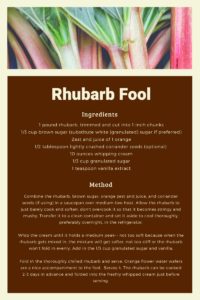We sat down with Chef Larkin Rogers, who curates the monthly Dinner in the Valley events, to chat about the edible plants and fungi that can be found in Cuyahoga Valley National Park. While reading, please keep in mind that although these edible plants can be found in CVNP, picking them is not allowed. Continue reading to find a recipe for a delicious and easy dessert!
Q: What kind of edible plants and fungi can be found in Cuyahoga Valley National Park?
A: Scores of edible plants grow in the park. If you know what you are looking at and looking for, it’s a veritable smorgasbord. Dandelions, nettles, garlic mustard, ramps, wild ginger, sugar maple, trout lilies, lamb’s quarters, ostrich ferns, daylilies, spicebush, blackberries, milkweed, white pine, cow parsnip, and dock are just a very few of the edibles in the park. However, it’s not the produce department at your local grocery store– what is available varies from season to season, from week to week.
Q: Are these specific to Ohio?
A: No, they are general to the Midwest; some are even more widely available.
Q: What time of year do these plants grow?
A: Wild edibles are seasonal, some with extremely short seasons, some much longer. All have a time when they are at their peak (most tender, sweetest, ripest), utterly dependent upon what plant you are talking about or what part of the plant you are using.

Q: Can I find these plants at my grocery store?
A: Some can be found at good grocery stores. Currently, for example, fiddlehead ferns and ramps are available at Heinen’s. But be careful when buying these fragile edibles at stores– the produce departments don’t necessarily know how to care for these highly perishable goods or they aren’t set up to deal with them. Farmers’ markets can be another good source.
Q: What kinds of meals can I prepare with these plants?
A: Every kind of meal, every part of a meal can incorporate wild edibles– breakfast, lunch, dinner, desserts, beverages. It’s a question of understanding what sort of produce you are handling; you can’t expect rosehips to fit sensibly into a frittata. Any plant from the allium family will have ‘onion-y’ characteristics. You probably wouldn’t want arugula for dessert, so why ask lamb’s quarters to be a dessert? Have some idea of what a plant is similar to from the palate and plant types you are familiar with.
Q: Can we pick edible plants that we find in the park?
A: Absolutely not. In saying the plants are edible or are available, bear in mind that NOTHING can be picked, harvested, or gathered in the park.
Q: How can I learn more about wild edible eats in Cuyahoga Valley?
A: Attend Dinner in the Valley on May 15th and plan to join us for our preprandial hike!
You can also grab a copy of Midwest Foraging by Lisa M. Rose and experiment with the guidebook in hand. Be brave but be knowledgeable. If you are able to forage for mushrooms, go with someone who knows their mushrooms– it’s tougher (and generally riskier) to identify mushrooms by a book’s illustrations or photographs, no matter how good they are.

Note: Although it is not a wild edible, rhubarb is a seasonal crop, very old-fashioned, and utterly delicious. The leaves are toxic (loaded with oxalic acid) so discard them. Some people dip raw rhubarb in sugar and eat it that way. Chef Larkin likes it cooked with a little bit of brown sugar, orange zest, and coriander seeds. Enjoy your meal!





